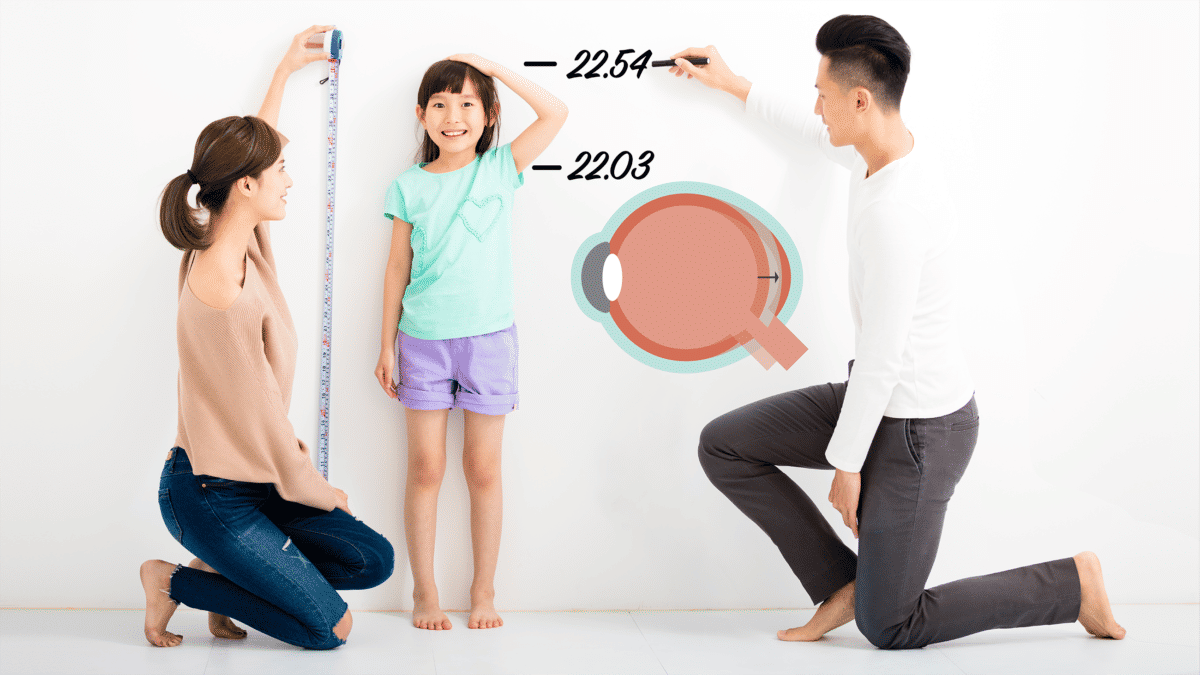Science
The ratio of refractive error to axial length change in myopia progression

Sponsored by
In this article:
Paper Title: Ratio of Refractive Error Change to Axial Elongation in Young Myopes
Authors: Alex Nixon (1), Wright Shamp (1), Elizabeth Maynes (1), Xu Cheng (1), Mark Bullimore (2), Noel Brennan (1)
- Johnson and Johnson Vision
- University of Houston College of Optometry
Date: May 2022
Reference: ARVO Meeting 2022, Denver
Summary
This systematic review determines the ratio of refractive error change to axial elongation and investigates the impact of age and axial length. Studies containing simultaneous refractive error change and axial elongation in untreated eyes were identified. 67 studies with 86 different subpopulations and 167 evaluations contains complete data sets. The natural logarithm of the magnitude of mean refractive error change versus mean axial length was analyzed.
The overall weighted mean ratio was 2.04D/mm (95% confidence interval: 1.96, 2.12). This means for each 2.04D increase in myopia there is an associated 1mm increase in axial length. Prediction intervals were relatively large, potentially due to variability in measurement and range of refractive error.
No covariate factors such as age, change in refractive error or ethnicity mix of the samples were found to be significant predictors of this ratio.
What does this mean for my practice?
This work establishes a clinical expectation of the ratio between refractive error change and axial elongation in myopic children of a 2.04D increase in myopia being equated to a 1mm increase in axial length; or 1D equating to around 0.50mm. This may allow for the identification of children that are "fast progressors" and also to support evaluating the efficacy of interventions.
What do we still need to learn?
This study found no statistically significant predictors of the ratio, such as age and refractive error. Further research is required to investigate the mechanism behind this. Interpretation should take into account limitations of using aggregated rather than individual subject data.
Abstract
Title: Ratio of Refractive Error Change to Axial Elongation in Young Myopes
Authors: Alex Nixon, Wright Shamp, Elizabeth Maynes, Xu Cheng, Mark Bullimore, Noel Brennan
Purpose: With increasing use of axial length to monitor myopia progression, the ratio of refractive error (RE) change to axial elongation (AE) has important clinical implications. However, the true value of the ratio and how age and axial length affect it remain uncertain. We conducted a systematic review and meta-analysis to model the ratio
Methods: A systematic search was performed using Ovid Medline, EMBASE, and Cochrane Central Register of Controlled Trials. The following combined terms were used: "myopia" or "myopic" and "child" or "children" and "progression" or "longitudinal" or "follow-up" or "shift" and "axial". Studies containing simultaneous RE change and AE in untreated eyes were identified. Other data collected were mean baseline age, standard deviation (SD) of AE, SD of RE change, sample size and proportion of Asian subjects in the study population. Due to desired statistical properties, the natural logarithm of the magnitude of mean refractive error change versus mean axial elongation was analyzed with a weighted multivariable linear mixed effects meta-analysis model, including three levels of random effects to account for all variability. The standard inverse variance method was used for weighting. Baseline values for mean RE and mean AE were included in the model as covariates.
Results: A total of 67 studies with 86 different subpopulations and 167 evaluations contained complete data sets. The model is plotted in the Figure and covariates summarized in the Table. The overall weighted mean ratio was 2.04 [95%CI: 1.96, 2.12] D/mm. No covariates were statistically significant. Prediction intervals were relatively large, potentially reflecting variability in refractive error.
Conclusion: This work sets a benchmark for clinical expectations with respect to the ratio between RE change and AE in myopic children. The lack of apparent impact of age on the ratio may reflect counterbalance between physiologic growth observed in younger children and a decreased ratio, anticipated from optical calculations, in longer eyes of older children. Interpretation should take into account limitations of using aggregated rather than individual subject data.
Meet the Authors:
About Clare Maher
Clare Maher is a clinical optometrist in Sydney, Australia, and a third year Doctor of Medicine student, with a keen interest in research analysis and scientific writing.
This content is brought to you thanks to unrestricted educational grant from
Enormous thanks to our visionary sponsors
Myopia Profile’s growth into a world leading platform has been made possible through the support of our visionary sponsors, who share our mission to improve children’s vision care worldwide. Click on their logos to learn about how these companies are innovating and developing resources with us to support you in managing your patients with myopia.











